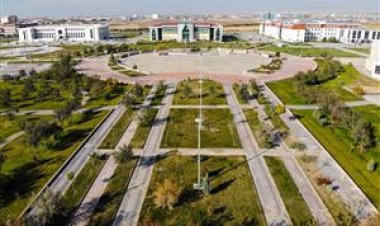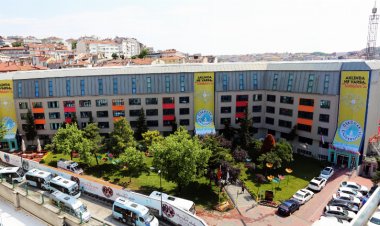Experimental investigation of full-scale reinforced concrete beams under reversed-cyclic pure torsion
Experimental investigation of full-scale reinforced concrete beams under reversed-cyclic pure torsion Kaya, Serap Altın; Yalçın, Cem; Kaya, Osman Many sub-assemblies of Civil Engineering structures such as columns and primary (spandrel) beams are subjected to torsion. This study aims to evaluate the torsional behavior of reinforced concrete (RC) members under reversed-cyclic pure torsional loading. An experimental program was conducted on nine full-scale specimens including the parameters such as concrete compressive strength, and transverse and longitudinal reinforcement ratios. During the tests, a new test setup was designed to allow the specimens to elongate at one end and to apply the moments at the other end along the specimen's rotational axis. Ultimate, peak and yield torques, torsional stiffness, energy dissipation capacity, and torsional bearing capacity of specimens were evaluated. In some specimens, longitudinal elongation was measured. Out of all test parameters, it has been concluded that the most important parameter on the torsional capacity of the members was the transverse reinforcement ratio. The concrete strength became a more effective factor in determining the fracture mode. Thus, the amount of longitudinal reinforcement was observed to be the parameter that mostly affected the flexibility of the elements.

Experimental investigation of full-scale reinforced concrete beams under reversed-cyclic pure torsion Kaya, Serap Altın; Yalçın, Cem; Kaya, Osman Many sub-assemblies of Civil Engineering structures such as columns and primary (spandrel) beams are subjected to torsion. This study aims to evaluate the torsional behavior of reinforced concrete (RC) members under reversed-cyclic pure torsional loading. An experimental program was conducted on nine full-scale specimens including the parameters such as concrete compressive strength, and transverse and longitudinal reinforcement ratios. During the tests, a new test setup was designed to allow the specimens to elongate at one end and to apply the moments at the other end along the specimen's rotational axis. Ultimate, peak and yield torques, torsional stiffness, energy dissipation capacity, and torsional bearing capacity of specimens were evaluated. In some specimens, longitudinal elongation was measured. Out of all test parameters, it has been concluded that the most important parameter on the torsional capacity of the members was the transverse reinforcement ratio. The concrete strength became a more effective factor in determining the fracture mode. Thus, the amount of longitudinal reinforcement was observed to be the parameter that mostly affected the flexibility of the elements.

 Bilgi
Bilgi 














